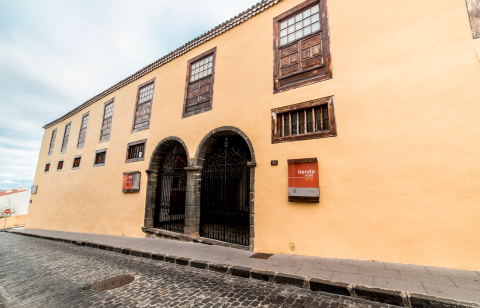4. Former Convent of San Benito. Spanish-American Craft Museum

After the 1836 Spanish Confiscation (when the state seized church-owned properties), the convent went on to perform various functions including a school, jail and citadel. Citadels, which proliferated in the 19thcentury, were small communities of citizens from disadvantaged backgrounds who resided in large buildings. Sometimes, entire families would share their everyday lives side-by-side. The building was declared dangerous in the last quarter of the 20th century as a result of continued use and neglect, but was later restored. It has been the site of the Spanish-American Craft Museum since 1992.
Before the Spanish Confiscation, the convent was a prestigious seat of learning. One of its most famous students was Agustín de Betancourt y Castro Molina. Born in Puerto de La Orotava in 1758, he was a distinguished military engineer and inventor.
His many feats include being the first person to fly a hot-air balloon in Spain, as well as inventing a metal thermometer, a mechanical loom, a marsh draining machine and an optical telegraph.
He also founded and headed the Spanish Institute of Civil Engineers. In 1807, preceded by his reputation, he travelled to St. Petersburg upon invitation by Tsar Alexander I. He served there as the inspector of the Institute of the Communications Engineers Corps and was part of the Tsar’s circle of trust. He was also named marshal of the Russian army and was involved in many works that were key to Russia’s modernisation, right up to his death. He established steam navigation on the Volga River and modernised cannon and weapons factories, water supply systems, railways, the paper money factory, bridges and dredging systems. He’s still a revered figure in Russia to this day.
The former convent is currently the site of the Spanish-American Craft Museum. Inside you’ll find collections including “Folk art in America and the Philippines”, “Folk musical instruments from Spain and America” and “Traditional Spanish pottery”.
Ask the museum’s staff members for more information about its various exhibitions. They will be happy to assist you.
Let’s continue downhill now until arriving at Calle Sabino Berthelot. Turn left and walk until you reach the second pedestrian crossing. You’ll see an old facade in a small garden with two cypress trees on your left. This is the next stop on your route.
